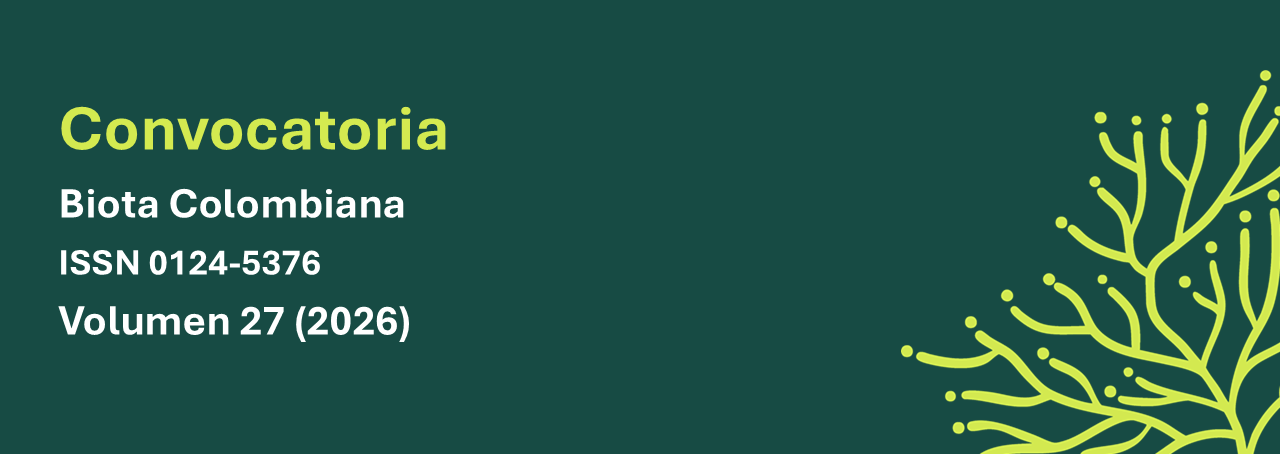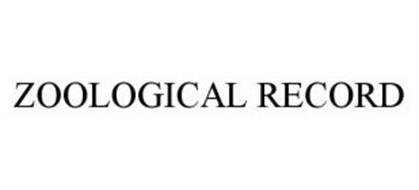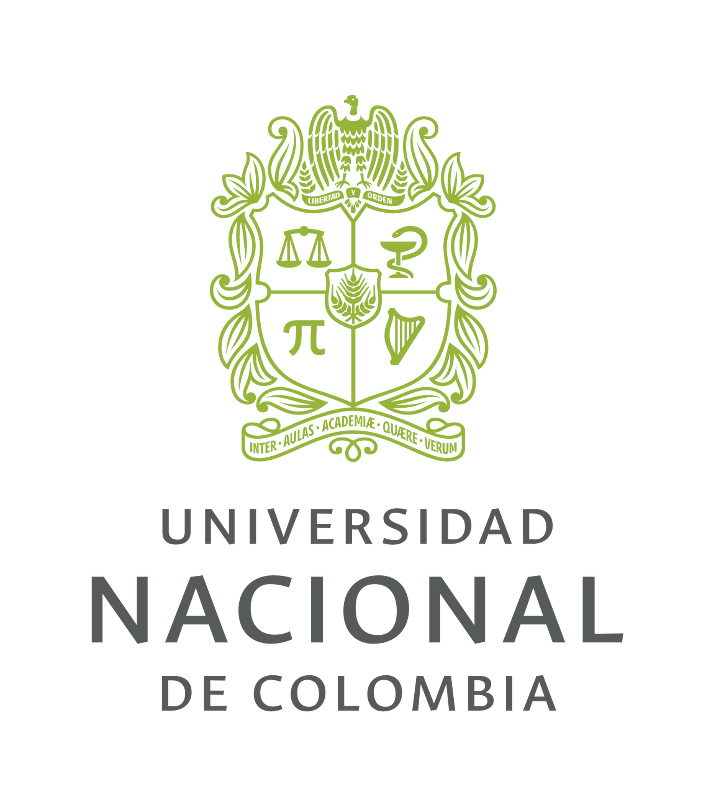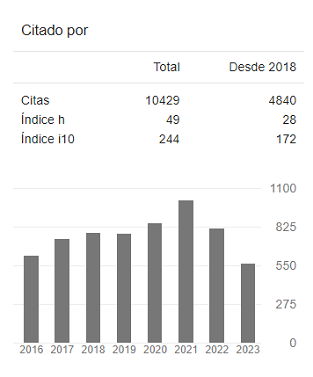Resumen (es):
Las invasiones biológicas y las modificaciones de hábitat son importantes motores de pérdida de biodiversidad. El represamiento de ríos, en particular, provoca perturbaciones a nivel hidrológico, limnológico y de hábitat, y facilita la introducción, establecimiento y propagación de especies exóticas. En Brasil, la mayoría de las especies exóticas de moluscos de agua dulce se han observado en embalses. Este estudio documenta la primera ocurrencia del gasterópodo dulceacuícola exótico Physella acuta (Physidae) en Sergipe, Brasil. En febrero de 2019, se observaron individuos de P. acuta a lo largo del margen del embalse de Xingó. Los individuos fueron fotografiados in situ y recogidos para su identificación en el laboratorio. Los resultados confirman la primera ocurrencia de P. acuta en Sergipe, ampliando su rango conocido en Brasil y actualizando la lista de especies invasoras tanto en Sergipe como en el bajo Río São Francisco.
Resumen (en):
Biological invasion and habitat modification are major drivers of biodiversity loss. River damming, in particular, leads to hydrological, limnological, and habitat disruptions, and facilitates the introduction, establishment and spread of alien species. In Brazil, most alien freshwater mollusk species have been observed in reservoirs. This study documents the first occurrence of the highly widespread exotic freshwater gastropod Physella acuta (Physidae) in Sergipe, Brazil. In February 2019, individuals of P. acuta were observed along the margin of the Xingó reservoir. The individuals were photographed in situ and collected for identification in the laboratory. Results confirm the first occurrence of P. acuta in Sergipe, expanding its known range in Brazil and updating the list of the invasive species in both Sergipe and the Lower São Francisco River.
Palabras clave:
macroinvertebrados acuáticos, especies invasoras, hábitat, moluscos, Physidae, distribución (es)
Referencias
Aditya, G., & Raut, S. K. (2002a). Potential of the leech Glossiphonia weberi (Blanchard) in controlling the sewage snail Physa acuta Draparnaud. Current Science, 83(11), 1317-1319.
Aditya, G., & Raut, S. K. (2002b). Predation of Water Bug Sphaerodema rusticum on the Freshwater Snails Lymnaea (Radix) luteola and Physa acuta. The Veliger, 45, 267-269. https://www.biodiversitylibrary.org/partpdf/97971
Agudo-Padrón, A. I. (2008). Listagem sistemática dos moluscos continentais ocorrentes no estado de Santa Catarina, Brasil. Comunicaciones de La Sociedad Malacológica Del Uruguay, 9(91), 147-179. http://www.redalyc.org/articulo.oa?id=52412049003
Agudo-Padrón, A. I., & Lenhard, P. (2011). Continental mollusc fauna of the Great Porto Alegre central region, RS, Southern Brazil. Biodiversity Journal, 2(4), 163-170.
Alexandre, G. L., Damasceno, H. V., Miyahira, I. C., & Caetano, C. H. S. (2017). Gastrópodes (Mollusca) presentes no campus Urca da Universidade Federal do Estado do Rio de Janeiro (UNIRIO). Revista Biotemas, 30(4), 31-40. https://doi.org/10.5007/2175-7925.2017v30n4p31
Appleton, C. C. (2003). Alien and invasive fresh water gastropoda in South Africa. African Journal of Aquatic Science, 28(1), 69-81. https://doi.org/10.2989/16085914.2003.9626602
Araújo, S. S., Aguiar Netto, A., & Sales, J. M. J. (2016). The fish, the fisherman and the Xingó’s dam on the Lower São Francisco in Sergipe and Alagoas in Brazil. Revista Interdisciplinar de Pesquisa e Inovação, 2. https://periodicos.ufs.br/revipi/article/view/4844/4377
Barbosa, N. P. U., Silva, F. A., Oliveira, M. D., Santos Neto, M. A., Carvalho, M. D., & Cardoso, A. V. (2016). Limnoperna fortunei (Dunker, 1857) (Mollusca, Bivalvia, Mytilidae): First record in the São Francisco River basin, Brazil. Check List, 12(1). https://doi.org/10.15560/12.1.1846
Barros, J. S. L., Pile, E. A. M., Vasconcellos, M. C., Santos, J. A. A., & Lessa, C. (2002). Experimental infection of Physa cubensis Pfeiffer, 1839 and Lymnaea columella with Fasciola hepatica miracidiae Linnaeus, 1758. Brazilian Journal of Veterinary Research and Animal Science, 39(3), 121-123. https://doi.org/10.1590/S1413-95962002000300002
Bellard, C., Cassey, P., & Blackburn, T. M. (2016). Alien species as a driver of recent extinctions. Biology Letters, 12(4). https://doi.org/10.1098/rsbl.2015.0623
Brackenbury, T. D., & Appleton, C. C. (1991). Effect of controlled temperatures on gametogenesis in the gastropods Physa acuta (Physidae) and Bulinus tropicus (Planorbidae). Journal of Molluscan Studies, 57, 461-469. https://doi.org/10.1093/mollus/57.4.461
Coelho, P. R. S., Thiengo, S. C., Mendonça, C. L. F., Oliveira, N. M. T., Santos, S. B., Caldeira, R. L., & Geiger, S. M. (2024). Diversity of freshwater mollusks from Lake Pampulha, Municipality of Belo Horizonte, Minas Gerais, Brazil. Diversity, 16(4), 193. https://doi.org/10.3390/d16040193
Collado, G. A. (2017). Unraveling cryptic invasion of a freshwater snail in Chile based on molecular and morphological data. Biodiversity and Conservation, 26(3), 567-578. https://doi.org/10.1007/s10531-016-1255-y
Collado, G. A., Vidal, M. A., Torres-Díaz, C., Cabrera, F. J., Araya, J. F., & Darrigran, G. (2020). Morphological and molecular identification of the invasive freshwater snail Physa acuta (Gastropoda: Physidae) into Llanquihue lake, Chilean Patagonia. Anais Da Academia Brasileira de Ciencias, 92, 1-11. https://doi.org/10.1590/0001-3765202020181101
Dillon, R. T. (2000). The Ecology of Freshwater Molluscs. Cambridge University Press.
Dillon, R. T., Wethington, A. R., Rhett, J. M., & Smith, T. R. (2002). Populations of the European freshwater pulmonate Physa acuta are not reproductively isolated from American Physa heterostropha or Physa Integra. Invertebrate Biology, 121(3), 226-234. https://doi.org/10.1111/j.1744-7410.2002.tb00062.x
Dunlop, J. E., Horrigan, N., McGregor, G., Kefford, B. J., Choy, S., & Prasad, R. (2008). Effect of spatial variation on salinity tolerance of macroinvertebrates in Eastern Australia and implications for ecosystem protection trigger values. Environmental Pollution, 151(3), 621-630. https://doi.org/10.1016/j.envpol.2007.03.020
França, R. S., Suriani, A. L., & Rocha, O. (2007). Composição das espécies de moluscos bentônicos nos reservatórios do baixo rio Tietê (São Paulo, Brasil) com uma avaliação do impacto causado pelas espécies exóticas invasoras. Revista Brasileira de Zoologia, 24(1), 41-51. https://doi.org/10.1590/S0101-81752007000100005
Global Biodiversity Information Facility. (2025). Search occurrences. Physella acuta, Brazil, preserved specimen. GBIF. https://www.gbif.org/occurrence/search?basis_of_record=PRESERVED_SPECIMEN&country=BR&taxon_key=5189806
Gulanicz, T., Kobak, J., & Poznańska-Kakareko, M. (2018). Effects of water level fluctuations and substratum drying on the survival and behaviour of the invasive freshwater snail Physa acuta Draparnaud, 1805. Marine and Freshwater Research, 69(9), 1389-1396. https://doi.org/10.1071/MF17349
Havel, J. E., Lee, C. E., & Vander-Zanden, M. J. (2005). Do Reservoirs Facilitate Invasions into Landscapes? Bioscience, 55(6), 518-525. https://doi.org/10.1641/0006-3568(2005)055[0518:DRFIIL]2.0.CO;2
Holanda, F. S. R., Wanderley, L., Santos, L. D. V., Rocha, I. P., Oliveira, M. V. S., & Pedrotti, A. (2021). Boat-generated waves and erosion on the shore of the Xingó power plant reservoir. Geociências, 40(1), 221-229.
Instituto Hórus. (2025). Base de Dados Nacional de Espécies Exóticas Invasoras. https://bd.institutohorus.org.br
International Union for Conservation of Nature. (2000). IUCN Guidelines for the Prevention of Biodiversity Loss Caused by Alien Invasive Species. IUCN.
Johnson, P. T. J., Olden, J. D., & Vander-Zanden, M. J. (2008). Dam invaders: Impoundments facilitate biological invasions into freshwaters. Frontiers in Ecology and the Environment, 6(7), 357-363. https://doi.org/10.1890/070156
Kock, K. N., & Wolmarans, C. T. (2007). Distribution and habitats of the alien invader freshwater snail Physa acuta in South Africa. Water SA, 33(5), 717-722. https://doi.org/10.4314/wsa.v33i5.184093
Latini, A. O., Resende, D. C., Pombo, V. B., & Coradin, L. (Eds.). (2016). Espécies exóticas invasoras de águas Continentais no Brasil. MMA.
Leme, J. L. M. (1966). Sobre a ocorrência do subgênero Physella no Brasil, e descrição de uma nova espécie (Mollusca, Gastropoda). Papéis Avulsos de Zoologia, 19(24), 269-278. https://www.revistas.usp.br/paz/article/download/209456/192248
Lowe, S., Browne, M., Boudjelas, S., & de Poorter, M. (2000). 100 of the World’s Worst Invasive Alien Species A selection from the Global Invasive Species Database. Invasive Species Specialist Group.
Lydeard, C., Campbell, D., & Golz, M. (2016). Physa acuta Draparnaud, 1805 Should be Treated as a Native of North America, Not Europe. Malacologia, 59(2), 347-350. https://doi.org/10.4002/040.059.0213
Millennium Ecosystem Assessment. (2005). Ecosystems and Human Well-being: Biodiversity Synthesis. World Resources Institute.
Miyahira, I. C., Gonçalves, I. C. B., Lacerda, L. E. M., Ximenes, R. F., & dos Santos, S. B. (2023). The introduction of Physa acuta (Gastropoda: Physidae) on Ilha Grande, Southeast Brazil, from initial stages to an established population. Brazilian Journal of Biology, 83. https://doi.org/10.1590/1519-6984.243801
Miyahira, I. C., Lacerda, L. E. M., & Santos, S. B. (2010). How many species are introduced everyday? Some insights from a tropical insular stream in Brasil. Tentacle, 18, 30-32. https://www.researchgate.net/publication/257238836
Miyahira, I. C., Pereira, L. S., & Santos, L. N. (2020). Non-native freshwater molluscs in the neotropics: What can be learned from brazilian reservoirs? Aquatic Invasions, 15(3), 455-472. https://doi.org/10.3391/ai.2020.15.3.06
Moratelli, R., Furtado, M. C., & Vanini, A. (Orgs.). (2023). Biodiversidade e saúde na Estação Biológica Fiocruz Mata Atlântica: Pesquisa, conservação e educação. Atena. https://doi.org/10.22533/at.ed.216230506
Morris, P. J. (2025). Museum of Comparative Zoology, Harvard University (Version 162.454) [Occurrence Data set]. https://doi.org/10.15468/p5rupv
National Institute of Water and Atmospheric Research. (2020). Freshwater invasive species of New Zealand 2020. NIWA.
Ng, T. H., Limpanont, Y., Chusongsang, Y., Chusongsang, P., & Panha, S. (2018). Correcting misidentifications and first confirmation of the globally-invasive Physa acuta Draparnaud, 1805 (Gastropoda: Physidae) in Thailand and Laos. BioInvasions Records, 7(1), 15-19. https://doi.org/10.3391/bir.2018.7.1.03
Núñez, V. (2010). Differences on allocation of available resources, in growth, reproduction, and survival, in an exotic gastropod of Physidae compared to an endemic one. Iheringia, 100(3), 275-279. https://doi.org/10.1590/S0073-47212010000300014
Núñez, V. (2011). Revisión de dos especies de Physidae. Revista Mexicana de Biodiversidad, 82, 93-108. http://www.scielo.org.mx/scielo.php?script=sci_arttext&pid=S1870-34532011000100008&lng=es&tlng=es
Paraense, W. L., & Pointier, J. P. (2003). Physa acuta Draparnaud, 1805 (Gastropoda: Physidae): a Study of Topotypic Specimens. Memórias Do Instituto Oswaldo Cruz, 98(4), 513-517. https://doi.org/10.1590/S0074-02762003000400016
Paul, P., & Aditya, G. (2021). Invasion of the freshwater snail Physella acuta (Draparnaud, 1805) in selected ponds of North Dinajpur, India. Journal of Environmental Biology, 42(3), 577-581. https://doi.org/10.22438/JEB/42/3/MRN-1628
Rosa, L. C. (2023). First record of the Asian clam Corbicula largillierti (Philippi, 1844) in the Lower São Francisco River, northeastern Brazil. Environmental Smoke, 6(2), 77-81. https://doi.org/10.32435/envsmoke-2023-0020
San Diego Natural History Museum. (2024). SDNHM Marine Invertebrate Collection [Occurrence Data set]. https://doi.org/10.15468/zmtv9t
Santana, D. O., Silva, M. J. M., Bocchiglieri, A., Pantaleão, S. M., Faria, R. G., Souza, B. B., Rocha, S. M., & Lima, L. F. O. (2013). Mollusca, Bivalvia, Corbiculidae, Corbicula fluminea (Muller, 1774): First record for the Caatinga biome, northeastern Brazil. Check List, 9(5), 1072-1074. https://doi.org/10.15560/9.5.1072
Santos, N. C. L., Santana, H. S., Dias, R. M., Borges, H. L. F., Melo, V. F., Severi, W., Gomes, L. C., & Agostinho, A. A. (2016). Distribution of benthic macroinvertebrates in a tropical reservoir cascade. Hydrobiologia, 765(1), 265-275. https://doi.org/10.1007/s10750-015-2419-6
Santos, S. B., Miyahira, I. C., & Lacerda, L. E. M. (2007). First record of Melanoides tuberculatus (Müller, 1774) and Biomphalaria tenagophila (d´Orbigny, 1835) on Ilha Grande, Rio de Janeiro, Brazil. Biota Neotropica, 7(3), 361-364. https://doi.org/10.1590/S1676-06032007000300037
Souto, L., Brito, M. F. G., & Rosa, L. C. (2011). Melanoides tuberculatus (Müller, 1774): a new threat to the conservation of native aquatic species in Sergipe, Brazil. Scientia Plena, 7(4). https://www.scientiaplena.org.br/sp/article/view/271
Taylor, D. W. (2003). Introduction to Physidae (Gastropoda: Hygrophila); biogeography, classification, morphology. Revista de Biología Tropical, 51, 1-287. https://tropicalstudies.org/rbt/attachments/suppls/sup51-1%20Physidae/Physidae%20Information.pdf
Thiengo, S. C., Silva, E. F., Leal, R. S., Esteves, R. A., & Fernandez, M. A. (2017). Major water projects and the dispersal of alien molluscs: The São Francisco River large-scale water transposition project in the semi-arid northeast region of Brazil. Tentacle, 25, 11-14.
Thomaz, S. M., Mormul, R. P., & Michelan, T. S. (2015). Propagule pressure, invasibility of freshwater ecosystems by macrophytes and their ecological impacts: a review of tropical freshwater ecosystems. Hydrobiologia, 746(1), 39-59. https://doi.org/10.1007/s10750-014-2044-9
Vinarski, M. V. (2017). The history of an invasion: phases of the explosive spread of the physid snail Physella acuta through Europe, Transcaucasia and Central Asia. Biological Invasions, 19(4), 1299-1314. https://doi.org/10.1007/s10530-016-1339-3
Wethington, A. R. (2004). Family Physidae. University of Alabama.
Wethington, A. R., & Lydeard, C. (2007). A molecular phylogeny of Physidae (Gastropoda: Basommatophora) based on mitochondrial DNA sequences. Journal of Molluscan Studies, 73(3), 241-257. https://doi.org/10.1093/mollus/eym021
Young, M. K., Smith, R., Pilgrim, K. L., & Schwartz, M. K. (2021). Molecular species delimitation refines the taxonomy of native and nonnative physinine snails in North America. Scientific Reports, 11, 21739. https://doi.org/10.1038/s41598-021-01197-3
Zimmermann, M. R., Luth, K. E., & Esch, G. W. (2014). Differences in snail ecology lead to infection pattern variation of Echinostoma spp. larval stages. Acta Parasitologica, 59(3), 502-509. https://doi.org/10.2478/s11686-014-0275-6
Zukowski, S., & Walker, K. F. (2009). Freshwater snails in competition: Alien Physa acuta (Physidae) and native Glyptophysa gibbosa (Planorbidae) in the River Murray, South Australia. Marine and Freshwater Research, 60(10), 999-1005. https://doi.org/10.1071/MF08183
Cómo citar

Esta obra está bajo una licencia internacional Creative Commons Atribución-NoComercial-SinDerivadas 4.0.
Derechos de autor 2025 Instituto de Investigación de Recursos Biológicos Alexander Von Humboldt

















